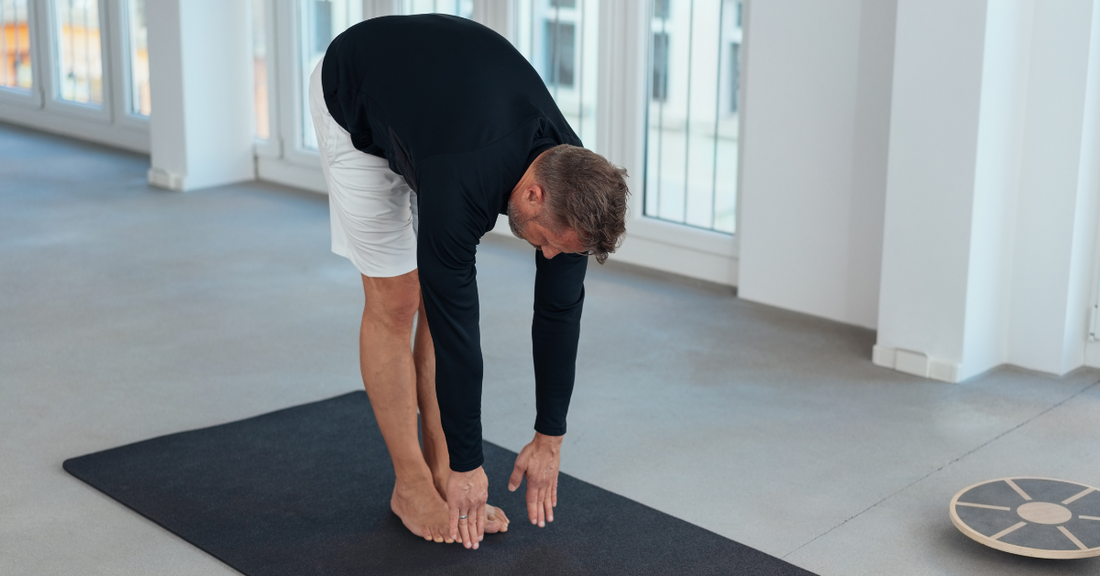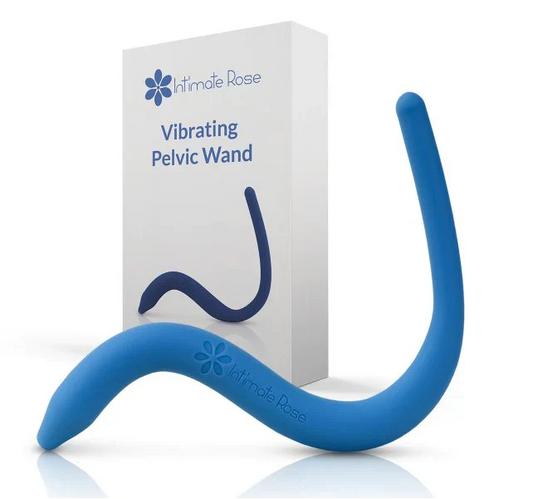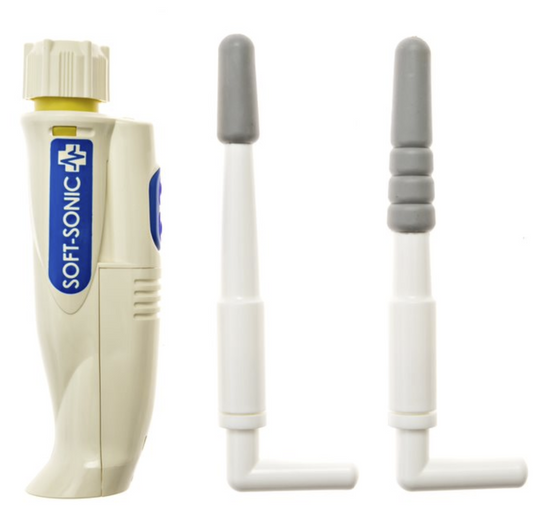
7 Signs You're Overdoing Kegels & How to Find the Right Pelvic Floor Balance
Share
Ever wonder if you can have too much of a good thing? With Kegel exercises, the answer is yes.
They’re everywhere now, from fitness routines to pregnancy apps, thanks to their proven benefits for bladder control and intimacy. But despite their popularity, many people assume that doing more will lead to better results.
Just like overtraining at the gym, doing too many Kegels can cause more harm than good. Instead of building strength, you might develop tightness, pain, or even pelvic floor dysfunction.
The key is learning to listen to your body. Recognizing the signs that you're overdoing it can help you adjust your routine, prevent discomfort, and get better results.
In this article, you’ll discover seven clear signs of overdoing kegels.
What Are Kegels?
Kegels are exercises that strengthen the pelvic floor muscles, which support the bladder, bowel, and reproductive organs. These muscles help control urination, stabilize pelvic organs, and enhance sexual function.
By regularly contracting and relaxing these muscles, Kegel exercises improve muscle tone, support continence, and promote overall pelvic health in both men and women.
Research consistently shows Kegels can be highly effective when done correctly. A published systematic review found that pelvic floor muscle training significantly improved urinary incontinence in 70% of women studied.
Another study showed that men with erectile dysfunction saw notable improvements after 12 weeks of regular Kegel practice.
These results highlight how powerful Kegels can be for both men and women, as long as the exercises are performed with proper technique and moderation.
How Many Kegels Is Too Many?
A common recommendation among experts is to do Kegels three times a day, with 10 repetitions per session, holding each squeeze for 3 to 5 seconds.
Pushing past this point won’t speed up results. Instead, it can lead to hypertonicity—a condition where your muscles stay overly tight and tense, causing discomfort and dysfunction.
Think of it this way, you wouldn't do 200 bicep curls expecting better results than 20 well-performed reps. The same principle applies to your pelvic floor. Excessive daily repetitions can backfire by creating chronic muscle tension that interferes with normal function.
What are the Signs of Overdoing Kegels?
Here are the signs that you might be overdoing Kegels:
-
Persistent Pelvic Pain and Discomfort
This is often the most obvious sign. Instead of feeling stronger, you might experience a dull ache or sharp pains in your lower abdomen, around your rectum, or deep within your vagina.
You might also notice pain that radiates to your lower back, hips, or even your tailbone (coccyx). These sensations indicate that your pelvic floor muscles are becoming overworked and tight, rather than effectively strengthened.
-
Pain During Intimacy or Gynecological Exams
One of the benefits of a healthy pelvic floor is often improved sexual function. However, if your Kegels are overdone, you might notice discomfort or pain during sexual intercourse.
This can also extend to pain during tampon insertion or while undergoing a gynecological exam.
This happens because overly tight pelvic floor muscles can lead to vaginal or rectal spasms, making penetration uncomfortable or even impossible.
-
Worsening Bladder & Bowel Control Issues
Yes, you read that right! While Kegels are supposed to improve these, overdoing them can have the opposite effect.
You might experience increased urinary urgency or frequency, feeling a constant, strong need to urinate even if your bladder isn't full. Difficulty fully emptying your bladder, or new or increased bladder leakage, can also occur.
Furthermore, you might find yourself straining during urination or bowel movements, or experiencing constipation or difficulty passing stool.
When your pelvic floor muscles are too tense, they struggle to relax properly, interfering with normal bladder and bowel function.
-
Muscle Fatigue and Soreness in the Pelvic Area
Just like overdoing squats can make your quads sore, excessive Kegels can make your pelvic floor muscles feel tired and weak, despite your efforts.
You might also experience soreness or achiness in the perineal area (the space between your genitals and anus).
This fatigue is a clear signal that your muscles need a rest period to recover and rebuild.
-
Inability to Fully Relax Your Pelvic Floor Muscles
A good Kegel routine includes both tightening and fully relaxing your pelvic floor muscles. If your muscles always feel tense or you have trouble letting go after a squeeze, they may be too tight.
This condition, called hypertonicity, can cause just as many problems as weak muscles.
-
Testicular or Perineal Pain
Men who overdo Kegels might experience unique symptoms, including pain or discomfort in the testicles, or an ache or pressure in the perineum (the area between the scrotum and anus).
They might also notice difficulties with urination or ejaculation.
-
Vaginal Pressure or Heaviness (Similar to Prolapse Symptoms)
While Kegels can help prevent or manage mild prolapse, overdoing them can create a sensation similar to it. You might feel a general feeling of pressure or a "falling out" sensation in your vagina.
This discomfort can mimic the feeling of a prolapse, even if you don't have one, and can be due to increased tension and downward pressure from overly tight muscles.
What to Do if You Think You've Overdone Kegel Exercises
If you suspect you’ve pushed your pelvic floor too far, taking the right steps early can help you recover and prevent further discomfort:
Take a Break from Kegels
Your first step should be giving your muscles time to recover. Rest for 1-2 weeks completely. This allows overworked tissues to reset and inflammation to subside.
Consult a Professional
Schedule an appointment with a healthcare professional, ideally a Pelvic Health Physical Therapist. These specialists can assess the current state of your pelvic floor muscles, determine if your muscles are weak, overactive, or both, and guide you through proper Kegel technique if appropriate.
Additionally, they'll teach you relaxation techniques and stretches to release tension in a hypertonic pelvic floor.
Start Pelvic Floor Relaxation Instead
Focus on activities that promote muscle release. Deep breathing exercises, gentle stretching, and warm baths can help tight muscles let go. The goal shifts from strengthening to achieving full muscle release and relaxation.
Ease Back Slowly
When you're ready to resume, start with proper form and fewer repetitions. Begin with just 5-10 contractions once daily, focusing on perfect technique rather than intensity.
Gradually increase duration and frequency over several weeks, listening to your body's signals. Quality trumps quantity every time, and patience during this phase prevents future setbacks.
How to Avoid Overdoing Kegels in the Future
Prevention is always better than correction. Moving forward, following these guidelines will help you maintain healthy pelvic floor function while avoiding the pitfalls of overtraining.
Only Do Kegels Once or Twice a Day
Limit your Kegel sessions to once or twice daily maximum. This frequency allows your muscles adequate recovery time between sessions while still providing the stimulation needed for improvement.
Use a Kegel Pelvic Floor Muscle Trainer
Using a Kegel trainer can help you do the exercises the right way. It gives feedback, so you know if you're using the correct muscles. Many trainers also remind you to rest and follow a slow, steady program. This helps prevent you from doing too much and protects your muscles.
Use Good Posture and Isolate the Right Muscles
Focus on maintaining good posture and learning to isolate the correct muscles without tensing your glutes, thighs, or abdomen. Proper technique is far more valuable than increased repetitions.
Don't Skip Rest and Recovery
Your muscles grow stronger during rest, not during exercise. Build recovery periods into your routine just as you would with any other fitness program.
Combine Strength with Flexibility
Ensure you spend equal time on relaxation as you do on contractions. This balanced approach prevents hypertonicity while building functional strength.
Unlock Your Full Potential with Our Kegel Pelvic Floor Trainer
Finding a safe, effective rhythm with Kegel exercises is easier when you have the right tools and guidance. These exercises only work when done with proper technique and balance, not by overdoing them.
A targeted device can provide the structure and support you need to stay consistent and avoid common mistakes.
The Kegel Pelvic Floor Muscle Trainer for Men from Prostate Health Store is designed to help you do just that.
The device connects to a smartphone app on iOS and Android, providing real-time feedback and guided workouts. It also tracks your progress, helping you stay consistent and improve over time.
Shop our Kegel trainer today and take the guesswork out of pelvic floor health.




